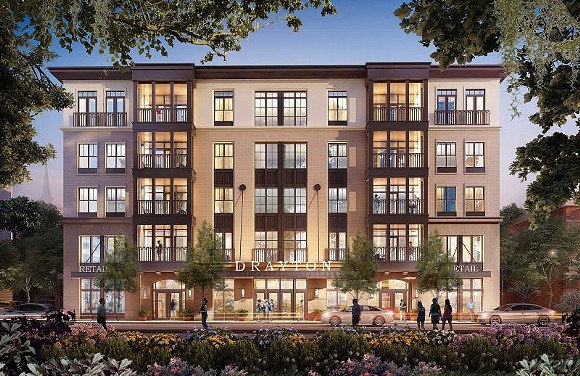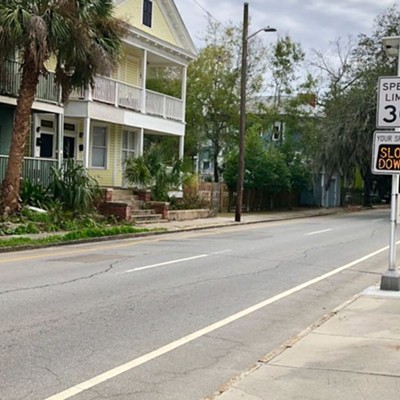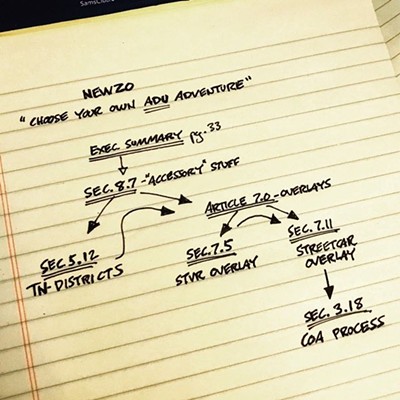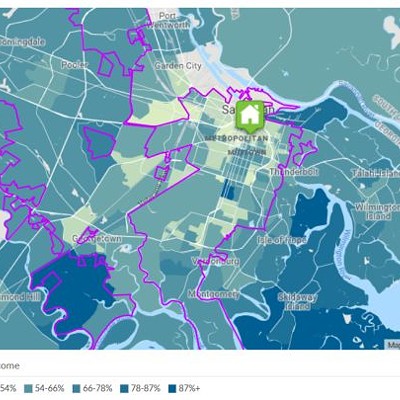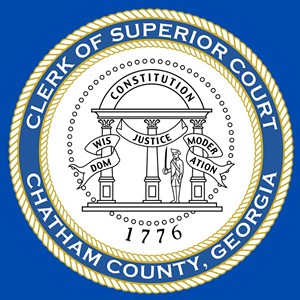IN 2007, I moved from Savannah to Atlanta. I quit my job with SCAD and headed to the big city to study city planning and urban design at Georgia Tech.
Idealistic, but not necessarily a car-free fanatic, I decided I would attempt to live in Atlanta without a car. It helped that I’d lived there previously, and knew what driving in Atlanta on a daily basis did to my sanity.
I found a small one-bedroom apartment on the ground level of an old building on Piedmont Avenue, between 3rd and 4th, right in the heart of Midtown. It was a little run-down, but the trans prostitutes on the street told me (literally told me, not by inference) that it was safe enough. I could afford it.
Once I’d finished unloading all my stuff, I sold the Jeep Cherokee I’d been driving since high school to Carmax. I did this confidently, because the apartment I’d chosen had what I would come to call “location efficiency.” Also, my transmission was about to fall out.
Here are some of the locations I’d visit most often, on foot and bike. I measured by path, not as the crow flies:
Publik Draft House at Fox Theater:1100 feet
Publix & Walgreens Shopping Center:1300 feet
MARTA’s North Ave. Station:2400 feet
Barnes & Noble w/ Starbucks at Tech Square: 3100 feet
Piedmont Park, south entry: 4100 feet
College of Architecture at GA Tech:4900 feet
All less than a mile and easy to get to without a car.
A more succinct way to encapsulate this data is by plugging the apartment’s address into Walkscore.com. My former Midtown apartment’s current score is 87—“Very Walkable —most errands can be accomplished on foot.”
I had everything that I needed on a daily and weekly basis. I lived like this for three years, and I loved it. There aren’t many places in Atlanta where one could pull off three years of car-free living with such ease, and even in this place it took prior planning. I was very deliberate about it.
I bring this up because the easiest way for me to re-create this experience in Savannah would be by renting a unit in the proposed apartment building that has caused so much consternation in the aftermath of last week’s City Council meeting. The project doesn’t have a name yet, so I will call it Much Needed Apartments on Forsyth (MNAF).
Here are comparable destinations to my apartment in Atlanta:
Sentient Bean & the Legion: 1000 feet
Kroger Grocery Store w/Starbucks:1200 feet
Nearest CAT Bus Stop: 500 feet
E. Shaver, Booksellers: 3100 feet
Forsyth Park: 40 feet
SCAD Fashion Department: 2000 feet
The Walkscore for this location is 86, similarly “Very Walkable”, and on top of that its Bikescore is a 96—“Biker’s Paradise”—due mainly to its flatness.
The pluses of developing residential units here, to me at least, are obvious. Everyone says that we need more residential units downtown. This site is available, and can be scraped clean without destroying anything of historical significance. I say put as many units on it as possible.
True, not all residents will choose to be car-free, but I’m willing to bet that a significant portion will be, especially if a couple of parking spaces are reserved for short-term rentals like Zipcars. The point is, it is very possible to be car-free here.
So what are the legitimate concerns? Let’s address them.
Parking. As stated above, not all of the residents will choose to be car-free, and the robot car utopia is not upon us quite yet. So where will all of these renters park? The parking is all handled on-site, built into the structure. There will be 142 spaces for 115 units. And considering their location, I highly doubt these renters will be pulling their cars out to go to dinner on Broughton, so they will not be competing with suburbanites and present downtown residents for other parking.
Height. The current plan has the building topping off at 61 feet, facing Forsyth Park. It will be almost directly across from another building that is 65 feet tall (106 W. Gwinnett). This is not an unprecedented behemoth. It will not “block out the sky.” What people should be concerned about more than where the building tops out, is where the building meets the street—the first 20 feet of height. Does the building meet the sidewalk with a pleasant, active facade that encourages pedestrian activity? This is the part of the building that might actually affect your life.
Price. I’ve seen the number $1200 for a studio thrown around. I have to believe that the developer has done the market research and knows that there are at least 115 people out there willing to pay that. The intersection of a willing buyer and a willing seller creates market price. If this number offends you somehow, think about two things. First, the more quickly this building rents its units, the more it will demonstrate there is pent-up demand for this product—location-efficient, downtown residential space. Second, if you want the price to come down, look at any supply curve from any basic economic text, and realize that you need to allow the creation of more of the product.
STVRs. Many seem to think that this is all a ruse to create an “Airbnb Hotel” on Forsyth Park. Read the text of the new 4-R zoning district. It specifically prohibits short-term rentals. This text was crafted to incentivize and facilitate the development of multi-family, long-term residential units (though the industry standard “-family” part doesn’t really apply when you’re providing studios, I know.) Throughout the STVR War I’ve been hearing that we need more residential units downtown. Well, this is what that looks like. Also, you do not create “affordable” housing in the free market by building it that way. This is an anti-capitalist notion that asks developers to forgo profits. You create affordable housing by creating more housing, in whatever way the market dictates. Then, the less desirable stock becomes more affordable through competition.
Finally, to briefly address the process involved. Our zoning is a god-awful mess. Considering how inconsistently applied and enforced it is, and how changeable it can be under the right circumstances, it is like the lawless wasteland of a Mad Max movie.
Lawyers like Harold Yellin are the Max Rockatansky’s of this landscape, assisting developers in driving their War Rigs to Approval Town. Can you blame them?
Somewhere I heard that “Chaos is a ladder.” Yes, now I’m mixing my pop-culture references, but it’s appropriate to the mess that our zoning is.
Did I use the word “quagmire” yet? Quagmire.
Want more predictable outcomes? Want less deference given to the lawyered-up?
Then insist that the City get busy with cleaning up our zoning. cs

